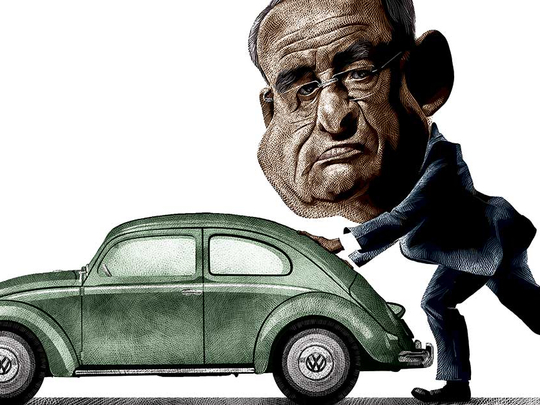
I am not a gear head. I am not a motoring journalist. I’m just someone who writes and edits for a living — and I like to drive different cars. And I admit I’m a sucker for a Volkswagen.
I’ve owned them in the past. And when the guy at a car rental counter offers me a car — yes, I’ll angle for an upgrade at no price — I don’t mind at all when it’s a VW. Over the past few years, I’ve driven a VW Passat diesel and a VW Golf diesel. And I’ll also admit that I was honestly impressed with their fuel economy, getting 800 kilometres on a full tank of diesel. And I was honestly impressed that the diesel I was burning up and down highways and byways wasn’t harming the environment.
Honestly impressed? Well, honestly seems to be bit of a dodgy word, if the latest developments out of Germany over the Volkswagen group are to be believed. VW, it seems, were more than a little bit dishonest when it came to the stated efficiency of their models — and the greenness of those diesel engines.
It seems the crafty Germans were cheating me — and many, many more that drive an estimated 11 million cars fitted with software that cheats on pollution emissions. The scam that has rocked the automobile sector has wiped €29 billion (Dh119.26 billion) off the company’s value. A dozen managers suspected of helping to develop and install the sophisticated software, known as a defeat device, or who were aware of the fraud have been suspended; the chief executive officer, Martin Winterkorn, has been forced out, and VW’s reputation sullied.
So I am only slightly shattered, barely disillusioned and mostly mildly irked. And even a bit amused.
Volkswagen was created in 1937 by the German Labour Front and from 1948, it emerged as an icon of West German regeneration. Headquartered in Wolfsburg, Lower Saxony, Volkswagen has factories in many parts of the world and the Volkswagen Group is currently Europe’s largest automaker.
I have fond memories of Volkswagen cars. Do you know what it’s like to drive a 20-year-old VW Beetle — one of the original models, not the new, pimped-up rides with the vase on the dashboard — for 200 kilometres with five other guys crammed in, rucksacks under the bonnet, and a couple of kayak canoes on the roof? Sheer fun. There was a pair of little triangular windows that you could open up.
The little bug
That engine has a gurgling sound all of its own. It didn’t run smooth. It hacked, like lungs that had smoked too many cigarettes, and was a bit reluctant to start if the weather was cold. The wheels seemed disproportionately big in comparison to the size of the car, and the spare was under the bonnet — leaving less room for those rucksacks.
When Adolf Hitler ordered Albert Speer to come up with a car for the German people in those heady days of German national socialism before the Second World War, the Volkswagen — the “People’s Car” was revolutionary. And those broad autobahns were built for the little bug to roar up and down Germany on — and came in handy when it came to moving Panzer divisions around the place as well.
Hollywood even took a liking to the Beetle, with a series of horrible movies honouring “Herbie, the Love Bug” as a central character.
And hippies? When they were hitting the highways on summers of love, peace and understanding, they were making the most of VW Beetle buses. I remember a couple of British cousins of mine turning up to our house in Dublin around 1970 in one of those VW camper vans. I was so disappointed that I wasn’t allowed to sleep in it. The freedom. One of my friend’s teen son todays wants a vintage VW camper as his first car. Why? The freedom.
Ah yes, the nostalgia. Simpler times, simpler cars. Cars without software. Cars you tinker with on a Saturday. Change the oil. Change spark plugs. Unscrew bits and disassemble things and put it all back together and have a nut left over when it was all done.
Then cars got sophisticated. Sensors. Computers. Wiring. They stopped being fun. When was the last time you dared taking a piece out of a car and put it back together? Now, it’s all plastic couplings and wiring harnesses that go into things that you haven’t got the faintest idea of what they do anyway.
Whatever happened to fixing that car with a piece of duct tape and pliers? Now, the first thing that happens is that the car is plugged into a laptop to see what’s wrong. No wonder the folks at Volkswagen could cheat on their software. Maybe I’m getting old, but weren’t things simpler then?







